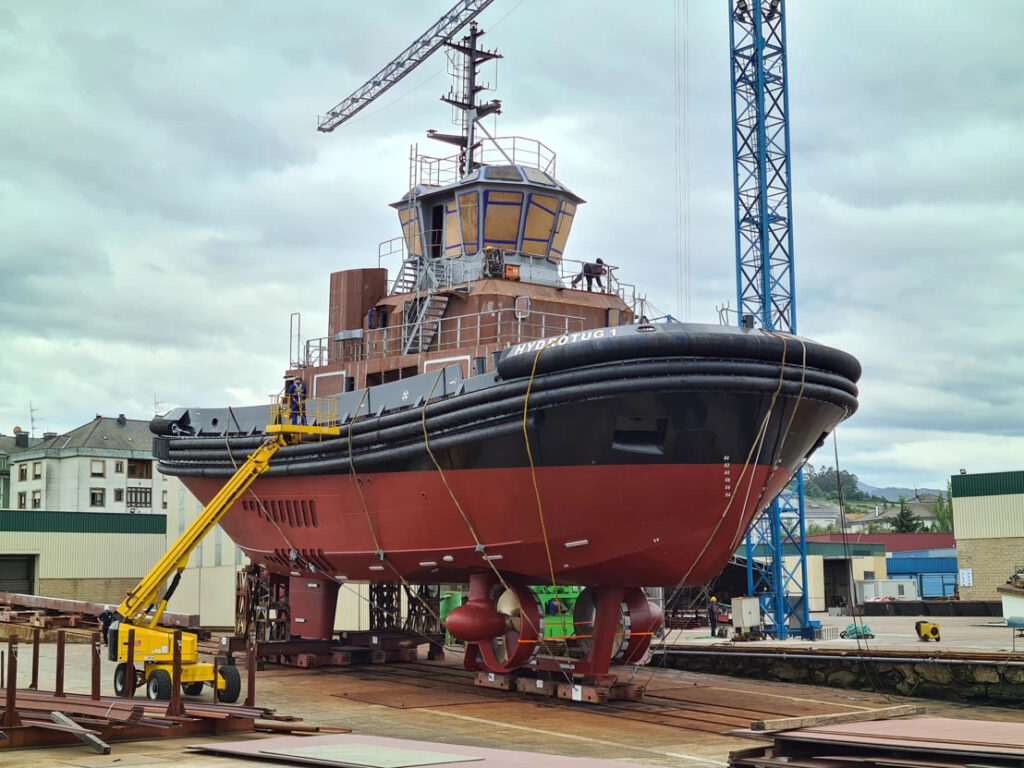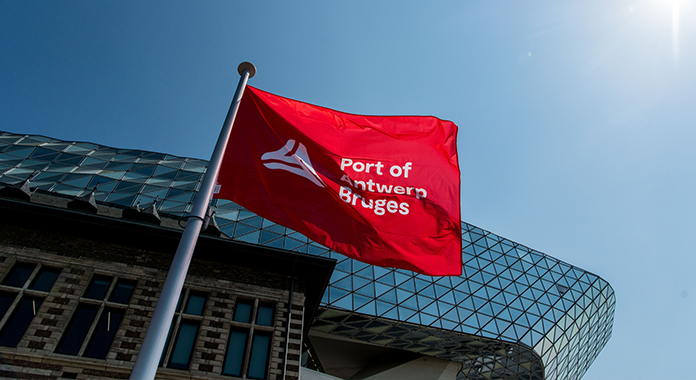Port of Antwerp-Bruges and cleantech company CMB.TECH are preparing to soon welcome the Hydrotug, the first hydrogen-powered tugboat, which is part of an integral greening programme for the port’s fleet.

As disclosed, the first water launch of the Hydrotug at Armón Shipyards in Navia, Spain took place on 16 May. The next steps include the remaining construction works on the ship to be completed in the next few months, so sea trials can follow later this year.
Scheduled to become operational in the first quarter of 2023, the Hydrotug is said to be an important step for the Port of Antwerp-Bruges in the transition to a sustainable, climate-neutral port by 2050.
The tug consists of two BeHydro V12 dual fuel medium speed engines that can run on hydrogen or traditional fuel.
BeHydro, a joint venture between CMB.TECH and ABC, recently developed the technology for medium-speed engines with higher power output. The Hydrotug is the first vessel to be powered by these dual fuel medium speed engines – each providing 2 megawatts – with the latest EU Stage V emissions after treatment.
The engines passed the necessary factory acceptance tests (FAT) that validate the correct operation of the equipment, which is required by Lloyd’s Register, the developers said.
As explained, the Hydrotug can store 415 kilograms of compressed hydrogen in six stillages installed on the deck and eliminates the emission equivalent of 350 cars.
CTO of CMB.TECH, Roy Campe, commented on the development: “We are delighted that Port of Antwerp-Bruges will be the first user of Hydrotug, the world’s largest hydrogen-powered vessel. The technology has been approved by Lloyd’s Register and we are ready to approach the global market of 10.000 tugs. With this technology, we can significantly improve the air quality in ports and bring hydrogen technology to every port worldwide.”
“Recently Port of Antwerp merged with the Port of Zeebrugge into one big organisation that aims to reconcile people, climate and economy. Our common goal is to become carbon neutral by 2050, by walking many different sustainability paths, such as carbon capture and storage, and efforts in hydrogen. By 2028 our goal is to have the first green hydrogen molecules on our platforms”, said Rob Smeets, Port of Antwerp-Bruges’ manager of operations.
“Moreover, we are investigating a hydrogen pipeline between the two ports and towards the European hinterland so we can use as much renewable energy as possible. This Hydrotug is an … example of what our sustainable future should look like.”
Following the recent shareholders’ agreement of the unified port company between Belgian cities Antwerp and Zeebrugge, the Port of Antwerp-Bruges unveiled its ambitions to become the energy gateway to Europe as a ‘green port’.”
Source: Offshore Energy






